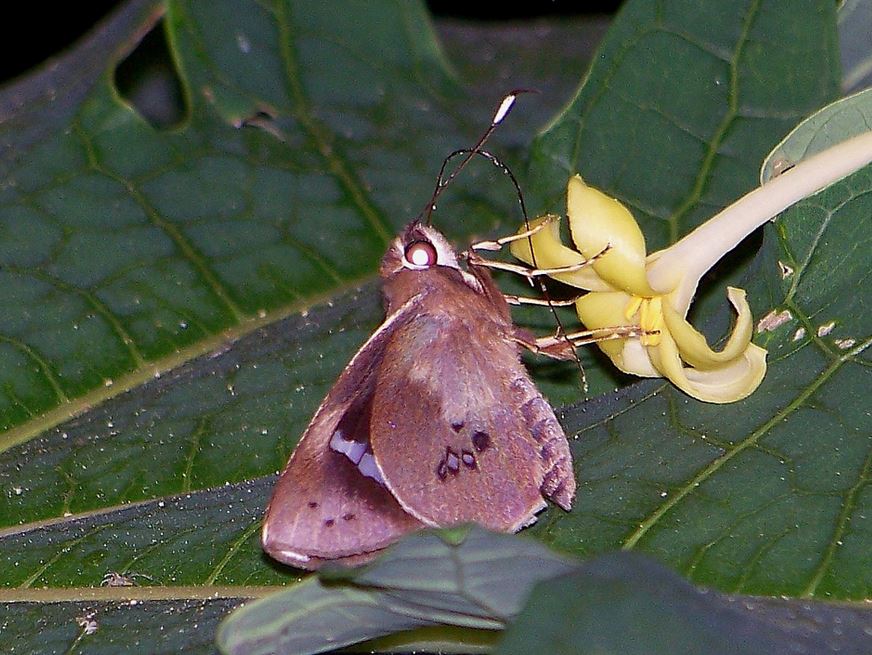Hesperiidae : Hesperiinae
Carystoides mexicana Freeman, 1969
Mexican Ruby-eye
Carystoides mexicana Freeman, 1969
Mexican Ruby-eye
Description and Similar Species: Sexes similar. The dark wings and body with a pattern of three large white rectangles on both sides of the forewing is similar to some other skippers eg Cuban Rhinthon Rhinthon cubana but it has in addition a pale patch on the upper forewing tip. The paler underwing colouration should preclude confusion with R. cubana however. Hammock Skipper Polygonus leo which has a similar shape and underside background colouration has several dark rectangular patches on the underside hindwing and a distinctive dark spot in the basal area.
Range: Mexico south to South America.
Status: Very rare in Cuba. There is just one record of a male caught in Santa Clara, Villa Clara Province, on 11 January 2002. This is the only record of a member of this genus in the Antilles. The finders considered that it was likely to be an overlooked resident rather than a migrant as the members of this genus are generally associated with densely shaded habitats and are therefore not thought to be likely candidates for migration (Shuey & Anderson, 2011).
Nectar Plants: Unknown in Cuba but in Central and S America can be seen at deep-throated flowers in the early morning. In Belize the flower most commonly used is Thevetia ahouai (Shuey pers. comm.).
Larval Foodplants: Unknown but will be a monocotyledon like other Hesperiidae.
Range: Mexico south to South America.
Status: Very rare in Cuba. There is just one record of a male caught in Santa Clara, Villa Clara Province, on 11 January 2002. This is the only record of a member of this genus in the Antilles. The finders considered that it was likely to be an overlooked resident rather than a migrant as the members of this genus are generally associated with densely shaded habitats and are therefore not thought to be likely candidates for migration (Shuey & Anderson, 2011).
Nectar Plants: Unknown in Cuba but in Central and S America can be seen at deep-throated flowers in the early morning. In Belize the flower most commonly used is Thevetia ahouai (Shuey pers. comm.).
Larval Foodplants: Unknown but will be a monocotyledon like other Hesperiidae.
